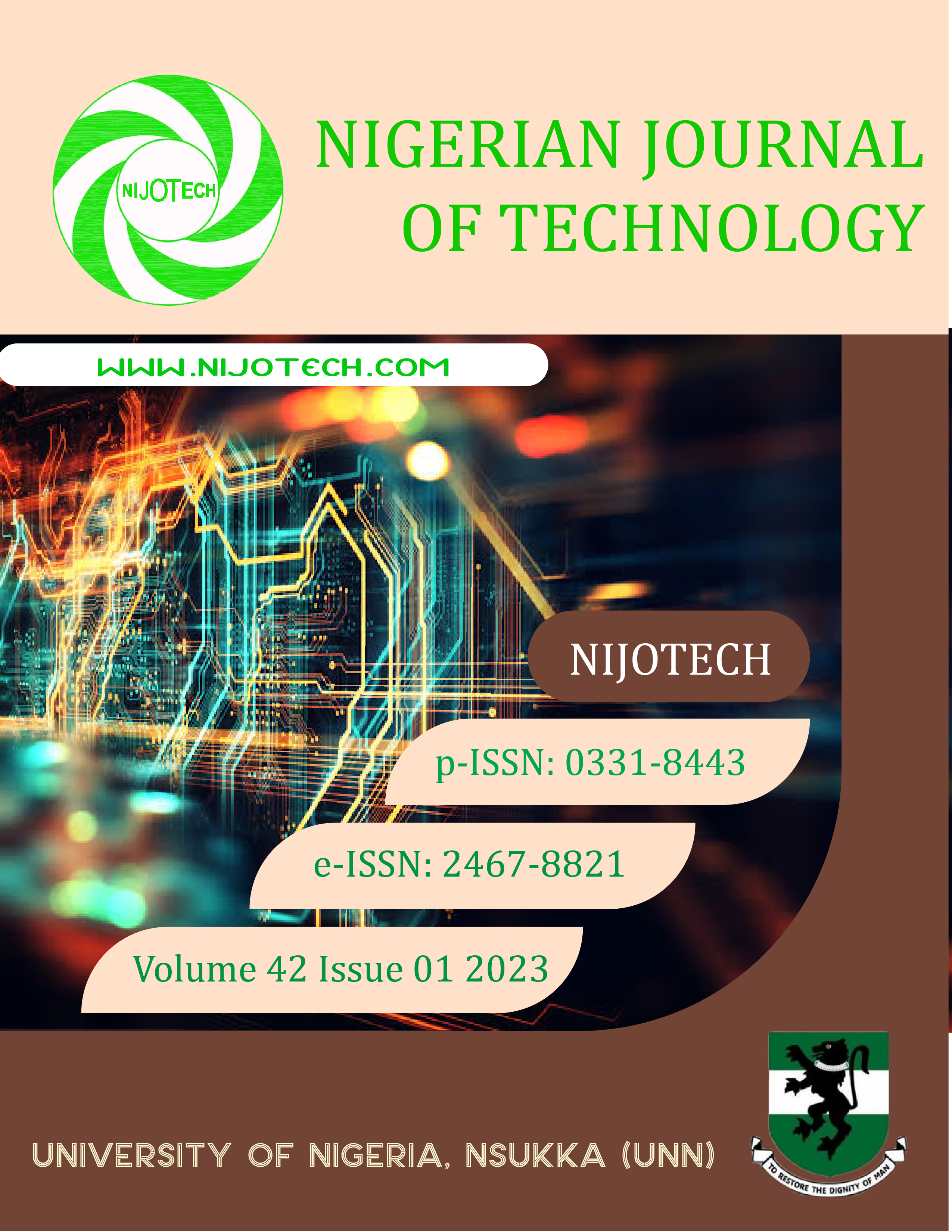ASSESSING THE EFFECTIVENESS OF INTRA-FIRM SUPPLY CHAIN INTEGRATION PRACTICES OF CONSTRUCTION FIRMS IN NIGERIA
DOI:
https://doi.org/10.4314/njt.v42i1.4Keywords:
Departments, external integration, internal integration, internal integration practices, Supply chain integrationAbstract
The ultimate aim of supply chain integration is to achieve effective external integration between firms in a supply chain, and the starting point for this broad integration is intra-firm integration. However, the extent to which functional units/departments integrate within and amongst them and the effectiveness of the integration is not fully understood. This paper reports the results of a study carried out in three purposively selected large construction organisations that operate at national level, with the aim of assessing the extent of, and the effectiveness of their intra-firm integration. Descriptive statistics was used to analyse the data collected across the three organisations. Findings indicated that every department engaged in internal integration practices (communication and information sharing, coordination and resource sharing, and organisational relationships) in varying proportions, and the effectiveness of the practices equally varied amongst the departments. 47% of the departments indicated that the extent of integration within and between them was high and effective, 22% indicated a moderate level and somewhat effective integration, while 31% indicated that the extent of their integration was low and ineffective. It is concluded that internal integration, when effectively done within and across functional units and departments, would enhance the internal operational efficiency and the external integrative capabilities that would increase competitive performance of organisations.
Downloads
Published
Issue
Section
License
Copyright (c) 2023 Nigerian Journal of Technology

This work is licensed under a Creative Commons Attribution-NonCommercial 4.0 International License.
The contents of the articles are the sole opinion of the author(s) and not of NIJOTECH.
NIJOTECH allows open access for distribution of the published articles in any media so long as whole (not part) of articles are distributed.
A copyright and statement of originality documents will need to be filled out clearly and signed prior to publication of an accepted article. The Copyright form can be downloaded from http://nijotech.com/downloads/COPYRIGHT%20FORM.pdf while the Statement of Originality is in http://nijotech.com/downloads/Statement%20of%20Originality.pdf
For articles that were developed from funded research, a clear acknowledgement of such support should be mentioned in the article with relevant references. Authors are expected to provide complete information on the sponsorship and intellectual property rights of the article together with all exceptions.
It is forbidden to publish the same research report in more than one journal.











